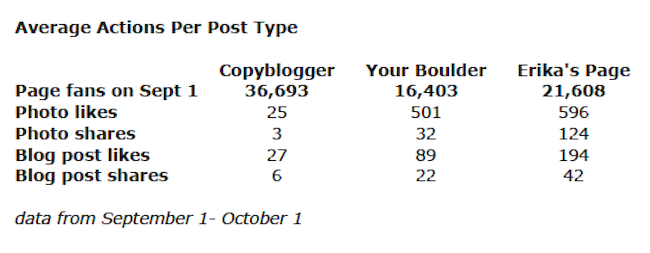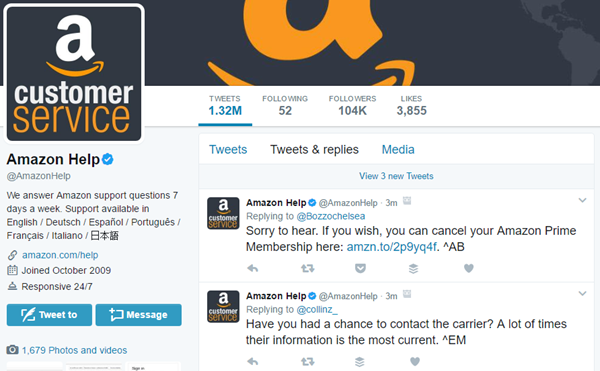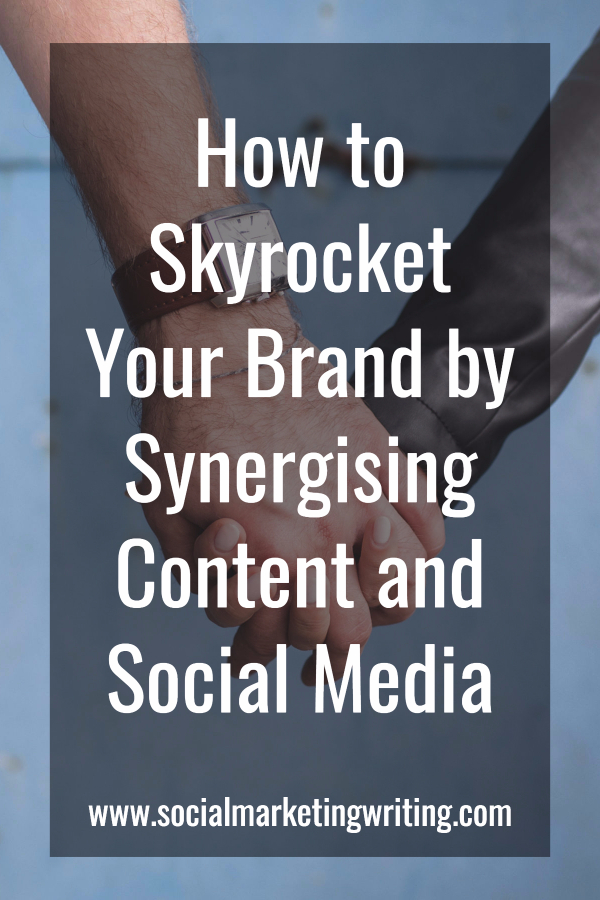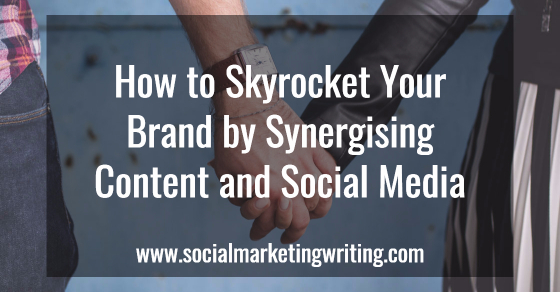Social media and content are inseparably related. In fact, the most successful marketers don’t even view the two as separate entities. To truly dominate the marketing game, social and content should be thought of as two sides of the same coin. When these two sides are masterfully designed to work together, a brand can dominate the competition with ease.
How can a brand make its content and social media work together to produce unstoppable marketing synergy? It requires more than simply creating content, promoting it on Facebook, and hoping your social media metrics will reveal good news.
Content-social synergy happens only through:
- Knowing which social media channels the audience uses before promoting the content
- Optimizing content for specific social channels
- A/B testing the content
Successful Content Comes from Social Listening
Whether it’s paid content or organic, most content marketing is produced in somewhat of a vacuum. Content creators rarely listen to the needs and concerns of their audience first. Content calendars are often hastily decided based on current trends or what the competition is publishing.
Truly successful content, however, is created when a brand uses social media to pay attention to the concerns of its readers. What conversations are happening on Twitter, Facebook, LinkedIn, etc. regarding your industry? What complaints about your industry keep resurfacing? What questions need to be answered, based on what you’re seeing? All of these are potential content topics.
Also, what kinds of content is your audience sharing the most? In what format is the most popular content? How-to videos? Infographics? Blog posts? A combination of these?
The bottom line is that ultra-successful content can only be created when you know exactly what your audience is hungry for. You should also observe how well your competitors are filling the needs of your audience. What are the strengths of your competition’s content? What are the weaknesses? For true content gold…
- Listen to your audience and determine what kinds of content they want.
- Look for ways your competitors are failing to satisfy those content wants.
- Save the day by creating better content than what your competitors are offering.
Successful Content Knows Where its Audience Is
Unfortunately, too much content today is created and distributed without regard to the specific social channels used by the audience. Marketers often distribute a piece of content across several channels without knowing how much of their audience is even using those channels. This wastes valuable time and practically ensures a low ROI.
For effective content-marketing synergy that gets amazing results:
- Learn which social channels your audience is likely to spend their time. Use demographics information from sources like Pew Research Center.
- Limit your content and social media activities to channels that are used by your audience.
- Create your content with those channels in mind (see below.)

An example of a company that uses only the right channels to promote its content is Copyblogger. By regularly posting on various channels and analysing their presence they were able to figure out that Facebook wasn’t bringing them sufficient ROI when compared to the Facebook pages of other companies and Copyblogger’s pages on other networks. So they deleted their page and continued to focus on Twitter and Google+ as they were already bringing them great results.
Successful Content is Optimized for the Right Social Channel
It’s common to distribute content on social channels that aren’t well suited for your content. This is a mistake, because relevance and quality are more important than quantity with social media and content.
Once you’ve done your audience research (discussed above) and you know which social channels they’re likely using, create content that’s optimized for those specific channels. What types of content are best for specific social channels? Here are a few guidelines:
Facebook:
A wide variety of content types
Facebook offers a wide set of content publishing options for any kind of business or industry. Whether you want to produce videos, infographics, memes or blog content, there are many ways to create content-social synergy on Facebook.
Because of the platform’s diversity and worldwide popularity, many new businesses choose Facebook as their central hub for content, company news, ads and marketing, entertaining, and more.
Facebook is all about community, and you can establish your Facebook Page as a “town square” for your fans to engage with your content. How-to videos are a great content option, as well as livestreaming announcements and updates, informative text posts, links to specials and information on your website, and much more.
Keep in mind that paid Facebook ads are extremely effective, especially when they’re done right.

A company that thrives on Facebook is Birchbox. They share a wide variety of content ranging from links to videos to photos. They also ensure that the content is on topics their audience likes.
Twitter:
Images, videos, links, GIFs, polls
Twitter is an exciting, fast-paced stream of information that never sleeps. There are many good ways and not-so-good ways to use Twitter. Content wise, it’s excellent for video, GIFs, pictures and links with attention-grabbing headlines.
Twitter is also an excellent customer service platform, so consider creating content using Twitter’s built-in polling function. You could ask poll questions regarding your industry, your business’ performance, your products, services, or anything else that shows your audience that you want to make them happy.
Remember that your brand should tweet more than just its own content. You should also retweet content from others. Not only will it make your tweeting more engaging, but it will also show the world that you’re not merely self-focused.

A company that understands how to get the most out of Twitter is Amazon. They have a main account for sharing content and an account for customer support. Both are very active, especially the customer support one which gets back to customers frequently.
YouTube:
Video content
Google’s YouTube is obviously the worldwide king of online video. Content that performs spectacularly on YouTube includes educational videos, humor, entertainment, and visually stunning video content.
If your brand produces videos regularly, it probably already has a YouTube channel. However, if your business doesn’t have a YouTube channel and you’re not sure if you produce enough video content to create a channel, there’s another option. Many businesses partner with well-known YouTubers who feature products or services in their videos.
Many of these influencers make money on YouTube through partnerships with business. So, make sure you set aside a budget for this.
Instagram:
Photo and video content
Owned by Facebook, Instagram is a purely visual channel based solely on video and photo content. As with any other social platform, there are plenty of best practices for creating Instagram content. But the important thing to keep in mind here is that Instagram is especially good for those brands who have a lot of visual content to share.
Do you have a brand story you can tell with video and pictures? Does your company have a wide variety of products that look appealing or attention grabbing? If so, creating visual content for Instagram could be very effective for you.
Also, are the competitors in your industry seldom seen on Instagram? If this is the case, and you’re creative enough to use Instagram effectively, you may be able to solidify a competitive advantage by having a presence on this platform.
Pinterest:
Photo and video content
Like Instagram, Pinterest is based completely on visual content. It can be thought of as a collection of virtual bulletin boards that are gathered and organized into categories. The platform is best for categories like fashion, DIY, exercise, photography, beauty, food, and other highly-visual niches.
Because Pinterest is so niche focused, many brands decide it’s not for them. But as with using Instagram, those businesses that find ways to produce effective photo- and video-based content can establish a strong competitive edge.
Snapchat:
Unpolished video and photo content
This video and photo sharing platform has several unique features that social media has never seen before. One significant twist for content producers is the fact that everything published on Snapchat is automatically deleted after set timeframes.
The temporary nature of Snapchat means content producers aren’t as pressed to get everything “perfect” before posting it. Without the pressure for a brand’s marketing to be 100% polished, brands can feel free to really get creative and experiment with more content ideas than ever before.
Don’t Forget! Successful Content Is A/B Tested on Social Media
Although many marketers consider A/B testing to be old-school, it’s actually more important than ever. No matter how proofed and polished a piece of content might be, you have no idea if it’s truly optimized for success until you’ve A/B tested it. Social media lends itself perfectly for this traditional way of testing content.
Be sure to test a variety of messaging, content, headlines, pictures, and anything else you can create two versions of. What content is being shared more by your audience? What’s receiving the highest number of comments and interactions?
The key is to be observant and gain valuable insights through your A/B testing. Eventually, you’ll be able to create content that’s fine-tuned for social media success while your competitors are still guessing and hoping with theirs.
There Are No Shortcuts to Content-Social Synergy
If your creative team is used to churning out content without regard to your audience or specific social channels, the time is now to revamp your strategy. Creating a winning brand requires you to be more meticulous than your competitors. You’ll need to beat the competition at researching, surpass them at listening, and outshine the rest of your industry in content creativity.
To skyrocket your brand and create a strong competitive edge, investments of time, effort and care are crucial. By putting your heart, mind and soul into your content and social strategy, your brand will make its audience happier. And, of course, your marketing efforts will achieve better ROI for a long time to come.
How do you synergise content and social media? Has combining them improves your marketing results? Please leave your comments below

About Adi Englander
Adi is a Social Media expert with a thing for startups and innovation. She has a knack for leveraging various social media platforms and tools to help businesses reach out and engage with their customers.
